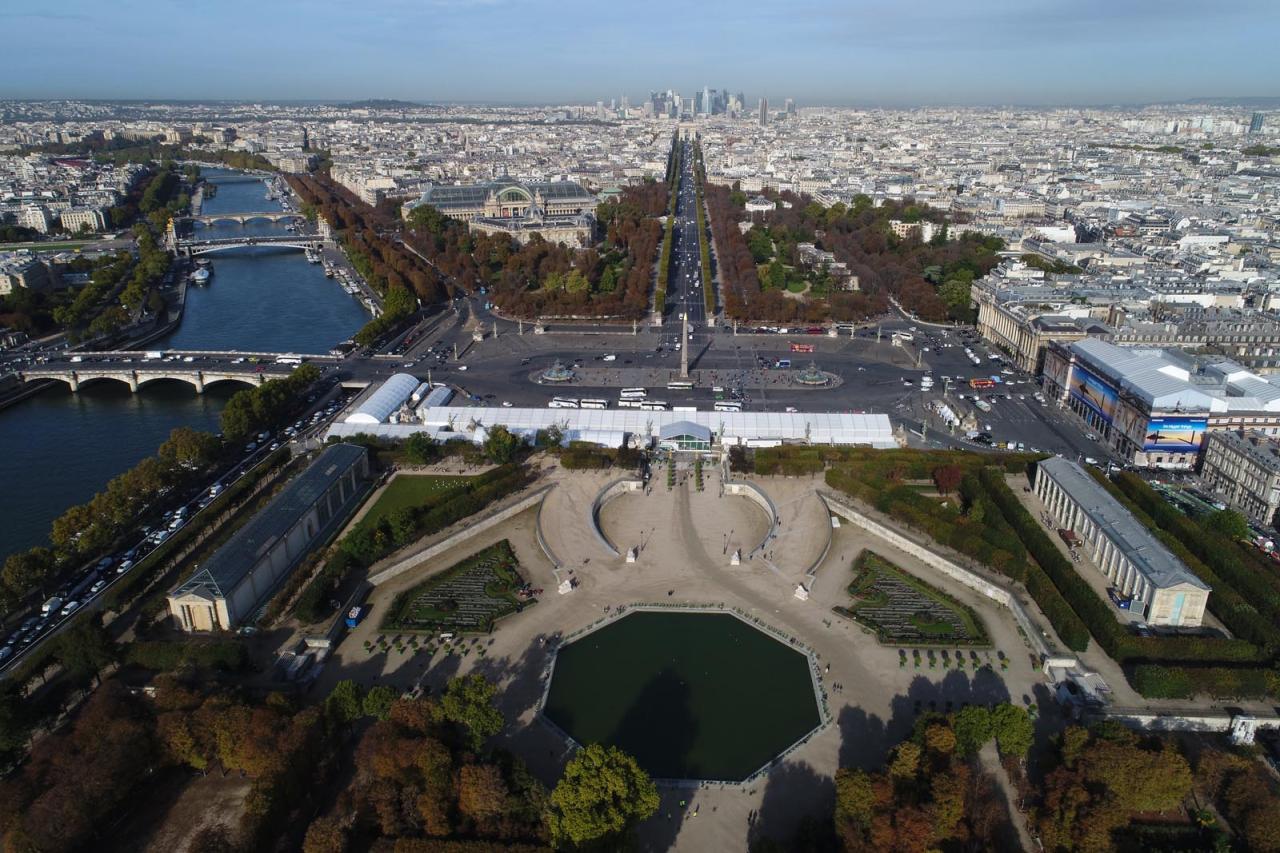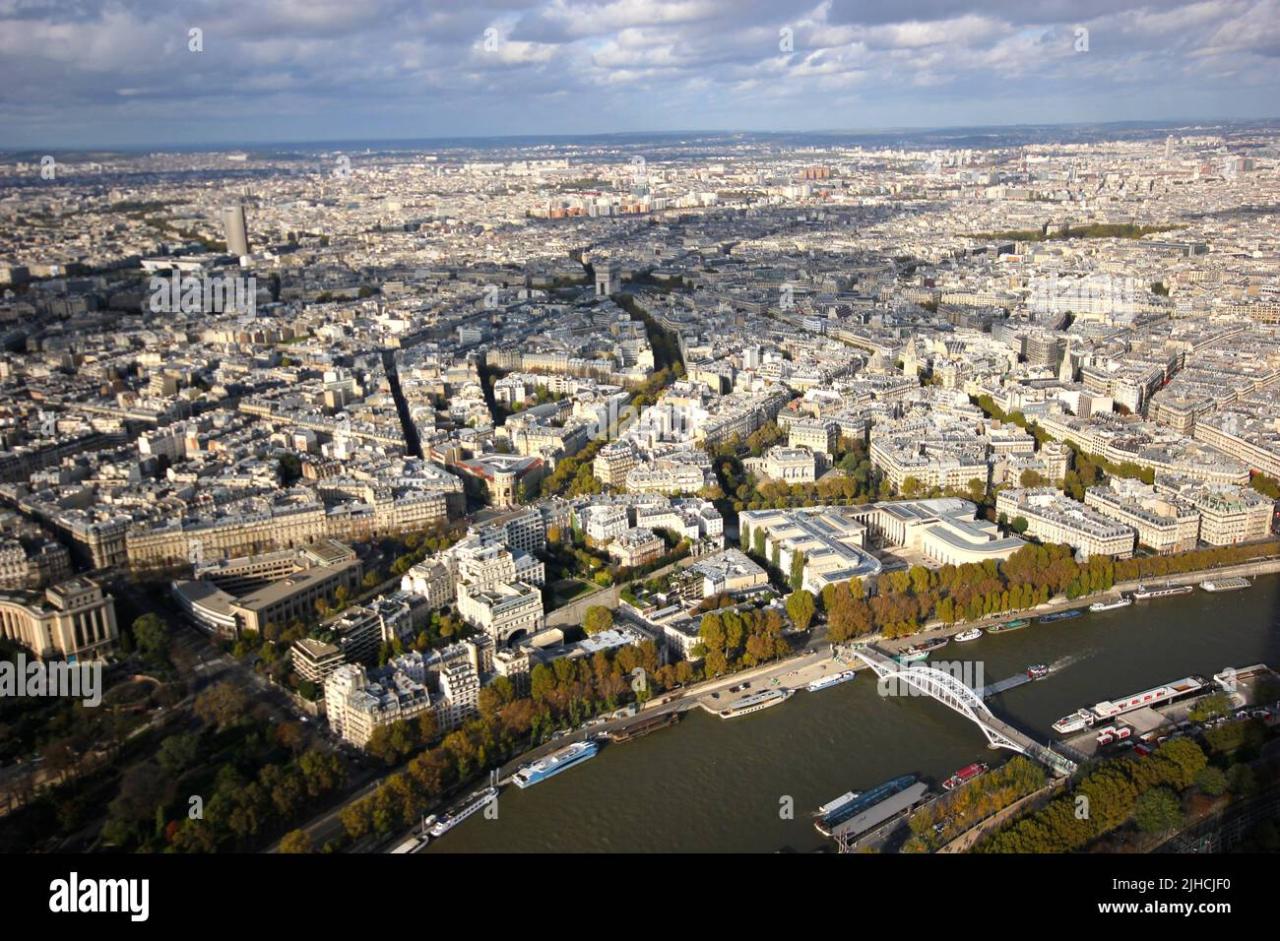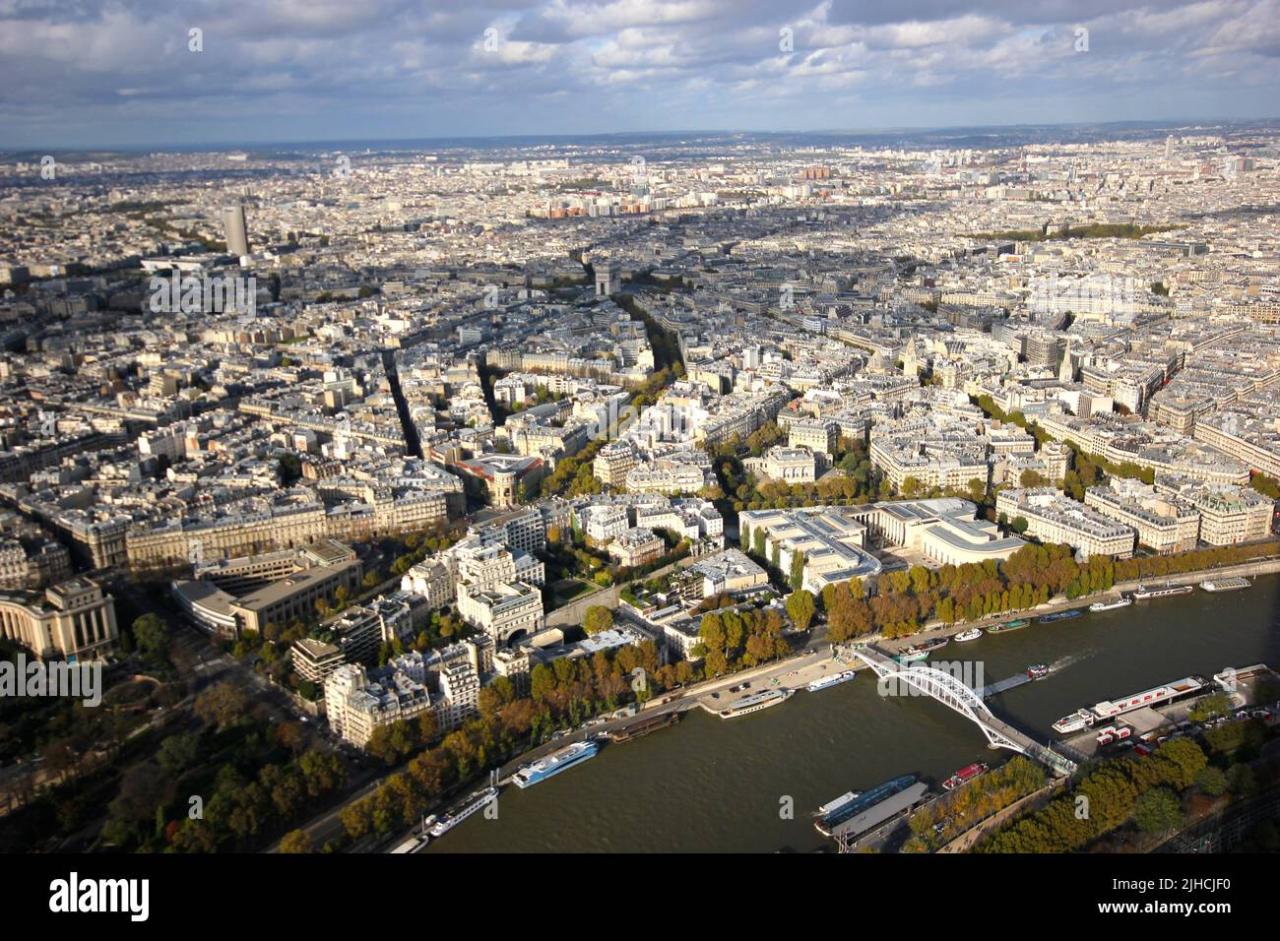Mystery Drone Paris sets the stage for this enthralling narrative, offering readers a glimpse into a series of unexplained drone sightings that captivated the city. These mysterious unmanned aerial vehicles, exhibiting unusual flight patterns and characteristics, sparked widespread speculation, ranging from elaborate art installations to covert surveillance operations. This investigation delves into the details of each reported sighting, exploring potential explanations, and examining the investigative approaches used to uncover the truth behind this perplexing phenomenon.
We’ll examine the reported characteristics of the drones – their size, shape, lighting, and flight patterns – along with the specific Parisian locations where they were observed. A chronological overview of sightings will highlight any patterns or inconsistencies. Then, we’ll explore various hypotheses, from artistic endeavors to more sinister possibilities, such as unauthorized surveillance or technological testing. Finally, we’ll discuss investigative methods, public reaction, and the media’s role in shaping the narrative surrounding this intriguing mystery.
The Phenomenon

Paris, the City of Lights, experienced a series of unsettling events in [Insert Year/Time Period Here] involving mysterious drones. These sightings, initially dismissed as hoaxes or misidentified objects, sparked significant public curiosity and prompted investigations by authorities. The unusual nature of the drones, their flight patterns, and the lack of clear identification have fueled speculation and various theories.
Drone Characteristics and Sightings
Reports describe the drones as relatively small, often described as roughly the size of a large bird. Their shape is inconsistent across accounts, ranging from descriptions of boxy, rectangular forms to more aerodynamic designs. The drones were consistently reported to have bright lights, usually described as white or red, although some accounts mention flashing or multicolored lights. Flight patterns were erratic and unpredictable, sometimes hovering in place for extended periods, other times moving rapidly and erratically across the Parisian skyline.
Locations of Drone Sightings
The drones were observed in various locations throughout Paris. Notable areas include the Eiffel Tower, the Louvre Museum, and the Champs-Élysées. Sightings were also reported near the Seine River and in several residential areas across different arrondissements. The apparent randomness of locations added to the mystery.
Chronological Overview of Sightings
The reported sightings occurred over a period of [Insert Duration Here]. Early reports were often dismissed as misidentifications, but as the number of sightings increased, and more detailed accounts emerged, investigations became more serious. Inconsistencies in descriptions, such as variations in size, shape, and lighting, make it difficult to determine whether all sightings involved the same type of drone or even whether all were genuine.
| Date | Time | Location | Description of Drone Activity |
|---|---|---|---|
| [Date 1] | [Time 1] | [Location 1, e.g., Eiffel Tower] | [Description 1, e.g., Small, white light, hovering near the top] |
| [Date 2] | [Time 2] | [Location 2, e.g., Louvre Museum] | [Description 2, e.g., Rectangular shape, red and white flashing lights, erratic flight pattern] |
| [Date 3] | [Time 3] | [Location 3, e.g., Champs-Élysées] | [Description 3, e.g., Small, silent, low altitude flight along the avenue] |
| [Date 4] | [Time 4] | [Location 4, e.g., Seine River] | [Description 4, e.g., Bright white light, hovering over the river for several minutes] |
Possible Explanations
The mysterious Parisian drone swarms defy simple explanation, prompting speculation across a range of possibilities, from artistic expression to clandestine operations. Several scenarios, both benign and malicious, could account for the observed phenomena. Let’s explore some of the more plausible hypotheses.
Sophisticated Art Installation, Mystery drone paris
The drones’ synchronized movements and complex formations suggest a carefully choreographed performance. A team of artists, perhaps working with cutting-edge technology and advanced programming, could be behind the spectacle. This explanation aligns with the increasingly blurred lines between art and technology, where drones themselves become the medium for creative expression. Imagine a vast, three-dimensional canvas painted across the Parisian night sky, with the drones acting as individually controlled pixels, shifting and changing to create a breathtaking, ephemeral masterpiece.
The lack of clear messaging or obvious artistic intent could be part of the artistic statement itself, leaving the audience to interpret the meaning and purpose of the display.
That whole mystery drone thing in Paris got me thinking about the future of deliveries. If they’re using drones secretly, maybe they’re trying to test something like Amazon’s drone program; check out the planned amazon drone delivery locations to see how far along they are. It makes you wonder if those Paris drones are related to that, or if it’s something completely different altogether.
Unauthorized Surveillance or Data Collection
Alternatively, the drones might be involved in unauthorized surveillance or data collection. Equipped with advanced sensors and cameras, they could be secretly gathering information on individuals, infrastructure, or even sensitive government facilities. This scenario is plausible given the increasing sophistication and accessibility of drone technology. The drones’ ability to fly undetected in the dark and their precise movements suggest a level of technological expertise and planning that would be beneficial for such clandestine operations.
The anonymity offered by using a swarm of drones would further complicate any attempts to trace the activity back to a specific individual or organization.
Ever wondered about those mysterious drone sightings over Paris? It’s a real head-scratcher, right? Check out this article for some insights on the whole “mystery drone Paris” situation: mystery drone paris. It dives into the various theories and investigations surrounding these unauthorized flights, offering a pretty interesting look into the security challenges drones pose in major cities like Paris.
Rogue Drone Operator Testing New Technology
Another possibility is that a rogue drone operator is testing new technology or capabilities. Perhaps an individual or a small group, outside of any official agency or organization, is experimenting with advanced swarm control algorithms or autonomous navigation systems. This scenario would explain the complex formations and seemingly random movements. The operator could be pushing the boundaries of what’s possible, perhaps motivated by personal ambition or a desire to showcase their technological prowess.
Consider the example of hobbyist drone enthusiasts who constantly push the limits of their technology; a more advanced, potentially clandestine, version of this could explain the Paris events. The lack of obvious malicious intent could simply reflect the experimental nature of the activity.
Comparison of Motives
The motives behind the drone activity range from relatively benign artistic expression to potentially malicious surveillance or technological espionage. The art installation hypothesis proposes a creative use of technology, while the surveillance scenario points towards a potential breach of privacy and security. The rogue operator hypothesis sits somewhere in between, representing a grey area where the intent may be neither wholly malicious nor purely benign.
The key difference lies in the intent and the impact of the actions. While an art installation might cause temporary disruption, unauthorized surveillance could have far-reaching consequences for individuals and society. The testing of new technology, depending on the specific technology and the operator’s actions, could also have varied consequences ranging from minor inconvenience to significant security risks.
Investigative Approaches

Uncovering the mystery of the Paris drones requires a multi-pronged investigative approach, combining traditional investigative techniques with modern technological analysis. A systematic strategy, focusing on data collection and analysis, is crucial to identify the drones’ origin, purpose, and operators.
That whole mystery drone thing in Paris is pretty wild, right? Makes you think about the potential for things to go wrong, even with advanced tech. Remember that orlando drone show accident ? It highlighted how important safety protocols are, especially with large-scale drone operations. So, while the Paris drones are intriguing, we should also consider the risks involved in similar events.
CCTV Footage and Witness Testimonies
Gathering and analyzing CCTV footage from the areas where the drones were sighted is paramount. This involves identifying all available security cameras within the flight paths and requesting recordings from relevant authorities or private businesses. The footage should be meticulously reviewed, focusing on identifying the drones’ characteristics (size, shape, color), flight patterns, and any potential operators or individuals who might have been involved.
Witness testimonies, while potentially less reliable than visual evidence, can provide valuable contextual information, such as descriptions of the drones, sounds heard, or observed behaviors around the time of the sightings. Cross-referencing witness accounts with CCTV footage can help corroborate information and eliminate inconsistencies.
Technical Analysis of Flight Paths and Signals
Identifying the drones’ owners or operators requires a technical analysis of their flight data. This involves analyzing the drones’ flight paths to identify patterns, potential launch points, and landing locations. Signal analysis, if possible, would focus on identifying the unique radio frequencies used by the drones to communicate with their controllers. This data, combined with information on drone models and manufacturers, can help narrow down the potential suspects.
For example, analyzing the flight path’s proximity to known locations of drone enthusiasts or hobbyists could help identify potential operators. Analyzing the signal strength and frequency could reveal the drone’s communication protocol and potentially identify the specific controller used.
Open-Source Intelligence (OSINT)
Open-source intelligence gathering can provide valuable context and potential leads. This involves searching online databases, news articles, social media platforms, and forums for information on similar drone incidents in other cities. Identifying patterns in these incidents—such as the types of drones used, the locations targeted, and the timing of the events—can reveal potential links or suggest a broader pattern of activity.
For instance, researching reports of similar unauthorized drone flights near government buildings or sensitive infrastructure could highlight a possible organized effort.
Drone Flight Pattern Analysis
Analyzing drone flight patterns can help pinpoint potential launch points or operational bases. This involves mapping the drones’ trajectories, looking for common starting or ending points, or unusual maneuvers that might indicate specific operational constraints or objectives. For example, drones consistently launching from a particular park or rooftop would strongly suggest that location as a potential base of operations.
The analysis of flight altitudes, speeds, and durations can also provide clues about the drones’ capabilities and intended purpose. A flight path consistently avoiding highly populated areas could indicate a deliberate effort to avoid detection or to target specific, less-crowded locations.
Public Reaction and Media Coverage
The mystery drone sightings over Paris sparked a whirlwind of public reaction and intense media coverage, ranging from widespread fascination and speculation to concerns about national security and public safety. Social media platforms became immediate hubs for discussion, amplifying both excitement and anxiety. News outlets globally picked up the story, shaping public perception and fueling further investigation.
Social Media Reactions
The rapid spread of information and images through social media platforms like Twitter, Facebook, and Instagram significantly influenced public perception. Initial posts showcased stunning videos and photos of the drones, often accompanied by speculation about their origin and purpose. Many users expressed awe and wonder, using hashtags like #ParisDrones and #DroneMystery to share their experiences and theories. However, as the sightings continued and explanations remained elusive, a shift towards anxiety and concern became apparent, with some users expressing fears about potential malicious intent or a security breach.
Discussions frequently centered around conspiracy theories, ranging from elaborate government projects to extraterrestrial activity. The sheer volume of online activity, both amateur and professional, significantly shaped the narrative and fueled public interest.
News Media Narratives
News coverage of the Paris drone mystery followed several key themes. Early reports focused on the visual spectacle, highlighting the unusual nature of the sightings and the lack of immediate explanation. As the mystery persisted, narratives shifted towards investigations, focusing on official statements from authorities and the efforts to identify the drones’ origin and purpose. A common thread across many reports was the element of mystery and intrigue, which captivated audiences worldwide.
Some news outlets emphasized the potential security risks, raising questions about the vulnerability of Parisian airspace. Others explored the economic impact, considering the potential disruption to tourism and air travel. The lack of definitive answers allowed for a wide range of interpretations, from sensationalized speculation to measured analysis of potential scenarios.
Impact on Tourism and Public Perception of Safety
The drone sightings initially had a mixed impact on tourism. While some visitors were intrigued by the unusual event, others expressed concern about potential safety risks. The uncertainty surrounding the drones’ purpose and origin created an atmosphere of unease, potentially deterring some tourists from visiting Paris. Conversely, the mystery also attracted attention from thrill-seekers and those interested in the unusual, possibly boosting tourism in the long run.
The overall impact on public perception of safety in Paris is difficult to quantify definitively. While the incident itself didn’t directly cause any harm, it did raise questions about security vulnerabilities and the potential for future incidents, potentially affecting the perception of safety for some.
Categorization of Media Reactions
Media reactions to the drone mystery could be broadly categorized into three main groups: fear, curiosity, and skepticism.
Fear
Reports emphasizing the potential for malicious use of drones, such as surveillance or attacks, contributed to a climate of fear among some members of the public. News stories highlighting the drones’ advanced capabilities and the difficulty in tracking them fueled these anxieties. Examples include headlines focusing on the potential for drone-based attacks or the possibility of unauthorized surveillance.
Curiosity
The sheer mystery surrounding the drones sparked significant curiosity. Many news outlets focused on the investigative aspects, presenting the mystery as a puzzle to be solved. The novelty of the event and the lack of easy explanations contributed to widespread speculation and discussion. Examples include articles presenting various theories about the drones’ origin and purpose, alongside interviews with experts and eyewitnesses.
Skepticism
Some media outlets expressed skepticism about the various explanations offered, emphasizing the lack of definitive proof and questioning the reliability of some accounts. This skepticism often involved questioning the motives of those who reported the sightings or questioning the authenticity of the footage. Examples include articles that debunked certain conspiracy theories or presented alternative explanations for the sightings, questioning the initial media frenzy.
Illustrative Scenarios: Mystery Drone Paris

Visual representations can significantly aid in understanding the complexities of the Paris drone mystery. By depicting key scenes and data, these illustrations help clarify the events and potential explanations. The following descriptions provide a detailed look at several key visual scenarios.
Nighttime Drone over the Eiffel Tower
The image depicts a nighttime scene in Paris, the Eiffel Tower gleaming brilliantly under a partially clouded sky. The city lights twinkle below, creating a hazy, atmospheric glow. The air is still, and a subtle mist hangs in the lower areas, adding to the mysterious ambiance. Dominating the scene is a dark, almost indiscernible drone hovering silently above the Eiffel Tower’s apex.
The drone is positioned against the backdrop of the night sky, its silhouette barely visible against the darker areas between clouds. The Eiffel Tower’s illumination casts long, dramatic shadows across the Champ de Mars below, contrasting sharply with the relatively dark and silent drone above. The overall mood is one of intrigue and quiet suspense, emphasizing the mystery surrounding the unidentified object.
Close-up of the Mystery Drone
This illustration provides a close-up view of the drone, revealing its intricate design. The drone appears to be of advanced design, possibly military-grade. Its sleek, dark chassis is made of a composite material, and its propellers are almost entirely silent, suggesting advanced noise-reduction technology. The image highlights the drone’s sophisticated sensors and cameras, suggesting its potential for high-resolution surveillance or data collection.
Tiny LEDs are visible, hinting at advanced communication capabilities. The details are crisp and clear, emphasizing the drone’s technological sophistication and suggesting a level of expertise beyond readily available consumer technology.
Map of Paris with Drone Sightings
A detailed map of Paris displays the locations of reported drone sightings, marked with small icons representing the drones. Flight paths are shown as dotted lines, connecting the various sighting points and indicating the drone’s movements across the city. Timestamps are included next to each sighting location, providing a chronological overview of the drone’s activity. The map shows a pattern, with several sightings concentrated around key landmarks, including the Eiffel Tower, the Louvre Museum, and the Notre Dame Cathedral.
The map is overlaid with a night-time imagery base map, providing context and enhancing the visual representation of the drone’s flight patterns. The concentration of sightings around major landmarks suggests a deliberate or targeted pattern.
Investigators Examining Drone Debris
The image shows a team of investigators meticulously examining debris from a drone, possibly recovered after a crash or malfunction. The investigators, wearing protective gear, use magnifying glasses and other tools to carefully analyze the fragments. In the background, digital displays show close-up images of the debris, and graphs depicting data analysis. The scene emphasizes the careful and methodical nature of the investigation.
The researchers’ focused expressions and the detailed examination of the debris highlight the importance of this evidence in piecing together the mystery. The image suggests a thorough and scientific approach to uncovering the truth.
Closing Notes
The mystery surrounding the Paris drone sightings remains, despite the various investigative approaches and public speculation. While definitive answers may still elude us, the events highlight the growing complexity of urban airspace and the potential for both benign and malicious uses of drone technology. The story serves as a reminder of the need for robust regulations and investigative capabilities to address the challenges posed by these increasingly sophisticated unmanned aerial vehicles.
Further investigation and analysis are crucial to fully understand the nature of these events and to prevent similar incidents in the future.
FAQ Resource
What types of drones were reportedly sighted?
Reports varied, but many described small, dark drones with minimal or unusual lighting patterns. Specific models remain unidentified.
Were there any injuries or damage reported?
No injuries or property damage directly linked to the drones have been officially reported.
Has anyone claimed responsibility for the drone activity?
No one has publicly claimed responsibility for the drone sightings.
What security measures were taken in response?
Increased police patrols and surveillance were implemented in areas where sightings occurred. Specific technological countermeasures remain undisclosed.
